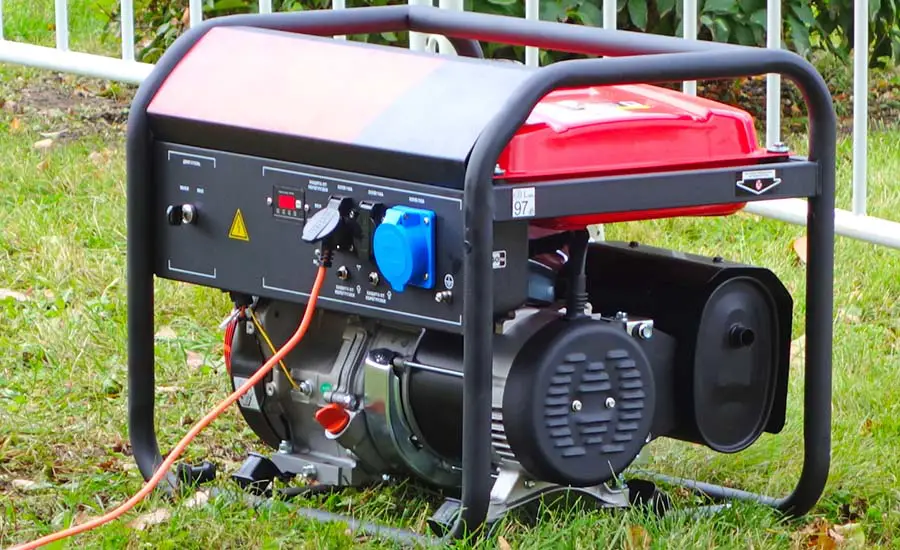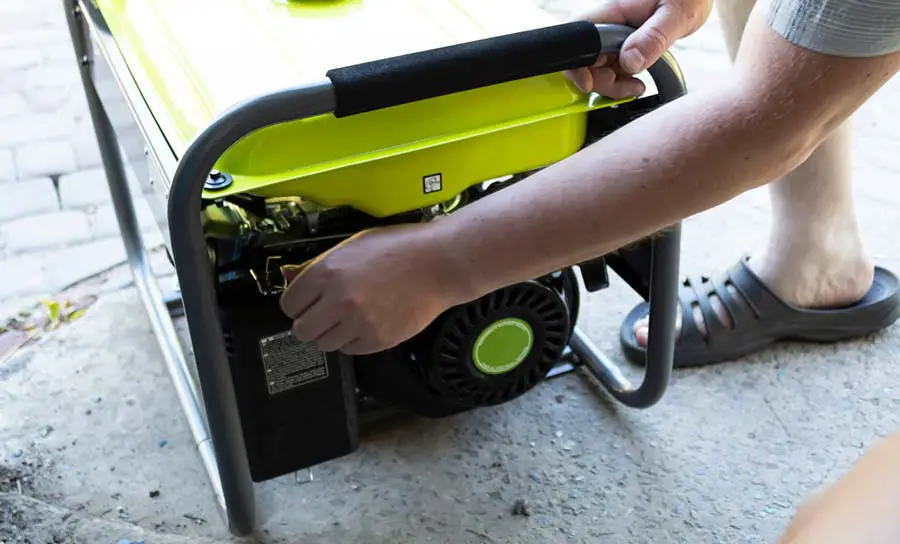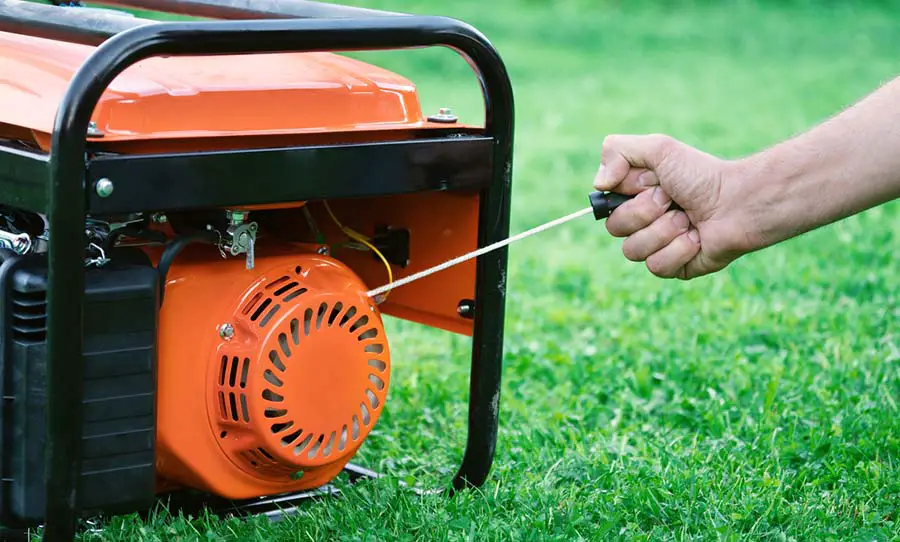
You have had your generator in storage for months, maybe even years, and now the day when you finally have it ready to start, you are without keys. Naturally, this happens with something unused, but the need for power is essential, and you will have to get it started without that.
Depending on the type of generator you have, you must dismantle the starter board, find the correct wires on the ignition, and bridge them. If there are safety switches, you will need to order a new key from the manufacturer, as these cannot be overridden by simply bridging the correct wires.
It sounds simple in theory, and with older generators starting them without a key was a breeze; however, as generator technology has improved, so too have the safety systems. There are several types of generators out there, and each one has its way of using the key to start the ignition.
How to Start an Electric Starter Generator Without a Key
If you have an electric starting generator, it is either one that starts when you turn the key to a certain degree or one that has a button that you push. These are easily the most complex to start without a key and require more than a simple basic understanding of electrical components.
There are several steps to this process, and you need to adjust each one for the specific system you have. Further, there may be several things that you will not be able to do as the manufacturer has installed safety systems that you cannot bypass without the key.
1. Prepare All the Tools You’ll Need
We recommend that you have a ratchet set, Phillips head screwdriver set, flathead screwdriver set, long-nosed plier, a clamp locking plier, side cutters, and electrical tape. Hopefully, you will not have to use all of these tools, but having them ready will allow you to dismantle everything needed quickly.
The process that you need to follow can be highly intense and will most likely cause several headaches along the way. As an extra step to save yourself in the future, we also recommend that you take pictures of every single thing before disassembling it.
2. Disassemble the Generator’s Ignition
Old Honda generators have starters that you can remove with a ratchet and some patience; new Cummins generators may need hours of work and understanding. You need to either remove the key ignition or remove the faceplate of the ignition area for the generator on which the starter sits.
You need to find the wires connected to the key port; these are the wires connected to allow ignition of the generator. Modern generators usually have three cables connected here, don’t touch or remove any of the other wires connected to the ignition plate.
3. Bridging the Wires
Depending on the model, the make, and the year of your generator, this will be the most complicated part. You will need to bridge the correct wires, usually two of the wires connected to the ignition port, the go through the normal starting process.
We recommend having a complete manual of your generator for this, as many will have ground wires that you must disconnect while two other wires are connected. Turn to start generators will not stay connected, with the wires only connected long enough for the machine to start.
4. Starting the Generator

Some pull-to-start generators still need the ignition to be in the start position; bridging the wires will allow you to continue as normal. If you have a button start generator, you should also continue adjusting the choke as needed.
More complicated systems may not be as easy as this, with most larger generators having safety switches and locks that will stop the machine from starting without the correct key. Modern generators can have the same safety systems that a car has for its key ignitions.
5. Shutting Down the System
This is when you must be careful as there can be a current running through the ignition wires from the generator itself. It would be best to disconnect the wires without touching the copper, which is why most people connect these wires using hooks instead of twisting.
Most pull-to-start generators will require you to turn the key into the off position once you finish using the machine. At the same time, electric start or button start generators may have separate shut-off switches that you should use when done.
Why Is It So Hard To Start a Generator Without Keys?
It may seem simple when you first start your generator; just turn the key, and it sputters to life. However, that is not always true, as the machine is more complex than you think. While older generators may not even have used keys, new generators have technology that makes them more tamper-proof.
The key in a generator connects vital circuits; as the machines became more complex, this turned from bridging two wires to many wires. It is so hard to do because each manufacturer has a different set of wires connected to the ignition of the switch, requiring additional knowledge.
Smaller generators are usually easier to start as their electronics are much simpler and easier to understand. While medium to larger generators have electronics that can take several hours to disassemble and understand completely, bypassing the key is so much harder to do.
Why Is It Not a Good Idea To Start a Generator Without a Key?
Apart from new generators having their warranty voided when doing this, you can cause considerable damage to the machine. Unless you have a good understanding of engines and ignition systems, you may cause wires to be bridged wrong, causing a fire or short circuit.
Many generator owners have found themselves with giant paperweights after thinking that hot wiring the system would be easy. However, new systems from Honeywell, Cummins, Honda, and every other manufacturer have put in safety stops to prevent you from accidentally turning on your machine.
While it may seem simple to start a generator, as they all have primary keys, the wiring on the inside can be highly complex. With wires connecting several different circuits, which would cause damage if wired incorrectly.
What Should You Do If You Don’t Have No Key for Your Generator?

The best thing to do is to contact your generator manufacturer and order a new set of keys, with many generator sellers already having spare keys. Surprisingly, most generators from the same manufacturer use the same set of keys with identical teeth layouts.
This means that it is much more cost and time-efficient to go out and buy replacement keys than it is to try and hotwire the system. Many of the horror stories from generators malfunctioning will be when someone does something like hotwiring the system.
Like modern cars, these generators’ electrics are not simple and cannot be understood by a few minutes of research online. There may be monitoring or control circuitry that relies on specific bridging from the key to work correctly.
Why Are There Complicated Key Systems On Generators?
While the world was simple and easy when we were all younger, the truth is that we now know things are different. While it is unlikely to be malicious, sometimes a generator will be started without any need, causing damage to the wiring and the machine.
It may be anything from children playing with the machine when they shouldn’t to not having the battery run dry while on permanent standby. If there is no proper ignition system installed, the generator and its battery may always be ready to start, causing a massive drain on the battery.
The largest generators on full standby won’t have key systems, but they usually cannot be manually started with ease. This is why you will see them having large panels with keys to open the panel, not necessarily to start the system when needed.
Conclusion
Depending on your skill level and your specific model, starting a generator without a key can be extremely difficult or a quick side project. Either way, it should be a last-ditch effort that you make after you’ve explored every other avenue of finding or replacing the generator key.
No one wants to have a partially disassembled generator only to find the key on your car keys!

